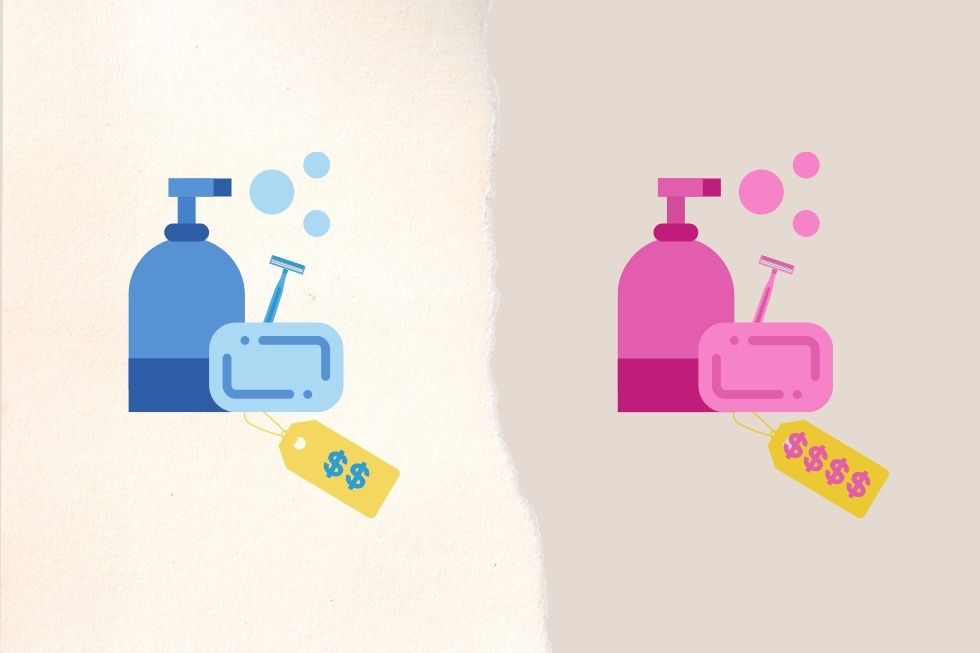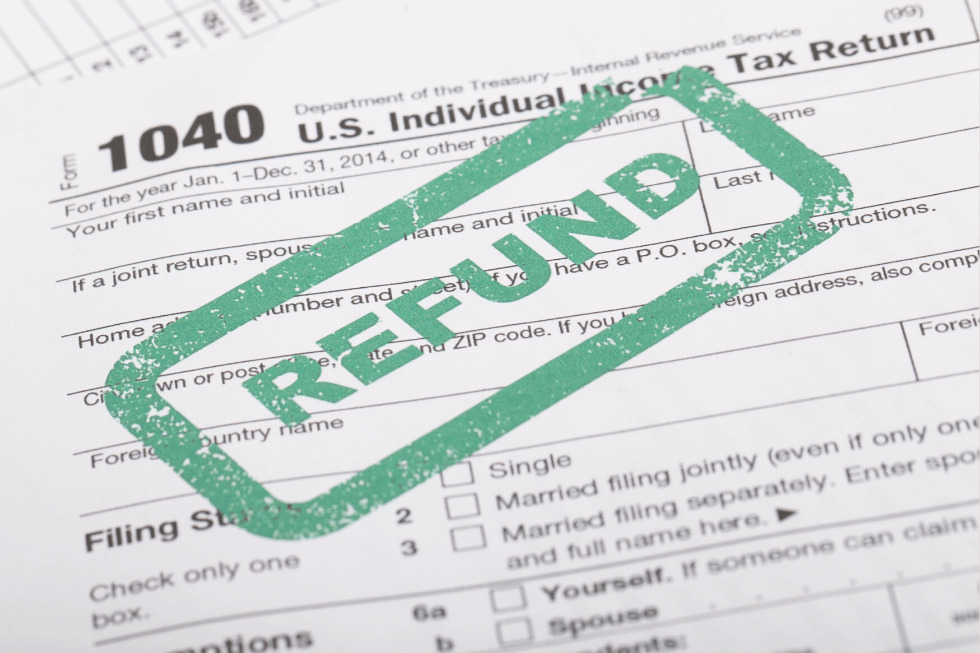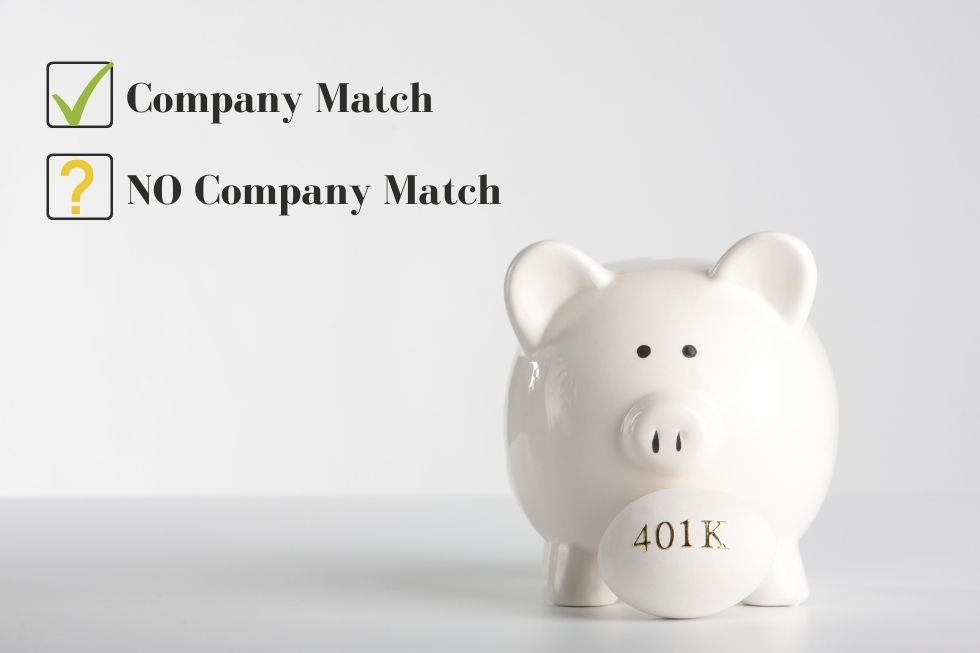Did you know that every year women pay, on average, an extra $2,3191,2 every year for the same services that men do?
That, my friends, is the pink tax in action. It is a real thing. And it’s documented time and time again… in study after study after study1,3,4.
So… What exactly is the pink tax?
The pink tax is the widespread practice of charging higher prices for a nearly identical product when it is marketed towards a woman, rather than towards a man.
This “pink tax” is not written in the IRS tax code, but is rather an informal, yet all-too-common practice of gender-based price discrimination… That said, there are codified discriminatory taxes like the Tampon Tax, which is an actual “luxury tax” charged on women’s personal care items. We’ll save that, however, as well as the gender pay gap that chips away at women’s wealth from the other side, for another day.
Wait what? How is this a real thing in this day and age?
Well, let’s look at the numbers…
One of the first studies that ever came out on this issue by the California Assembly Office of Research found that women spend an additional $1,351 in 1995 ($2,319 in today’s dollars) every year on services alone (think: dry cleaning, haircuts) as a result of the Pink Tax.
In 2015, the New York City Department of Consumer Affairs studied gender-based pricing disparities across nearly 800 products from more than 90 brands, sold both online and in physical stores in New York City.
In 30 of the 35 categories studied, the female version of products, while essentially identical, were priced higher than the male version. How much more?
As you can see, the pricing disparity for women’s items impacts females at every stage of life… from children’s clothing and toys through adulthood all the way to senior health care products.
Over a lifetime, this adds up. >>> Over $1M lost over a lifetime.
| Age | Lifetime Pink Tax Cost at Age… | If $ Had Been Invested- 4% return |
| 5 yrs | $11,595 | $12,560 |
| 15 yrs | $34,785 | $46,435 |
| 25 yrs | $57,975 | $96,577 |
| 40 yrs | $92,760 | $220,364.17 |
| 60 yrs | $139,140 | $551,900.40 |
| 80 yrs | $185,520 | $1,278,337.10 |
Holy cow! How widespread is this?
This is not just a California or New York thing. It’s not just a national thing. This is a global thing.5
States like California, Florida, Connecticut and South Dakota followed New York to research their own markets, and the United States Congress Joint Economic Committee has even published a report documenting the realities of the gender-based pricing and the “pink tax.”
Ok., so why exactly does the pink tax exist?
In some cases product differences can be a valid reason for price variations… if a product has additional features or production complexities, that would be a valid reason for price differentiation.
In other cases, this issue goes up the supply chain. Government tariffs impact products differently and, you guessed it, women’s items were taxed 0.7% more5, on average, than identical products aimed at men. In these cases, manufacturers pass the costs of the government-imposed pink tax on through the supply chain to eventually their female customers.
That said, these valid reasons do not account for many, many goods and services—such as doubling the cost of dry cleaning a 100% cotton button-down shirt of a comparable size.6
This is B.S. What can I do to fight this?
The best way to deal with these micro-injustices is to respond with micro acts of rebellion until enough micro acts by the many turn into a macro change.
Any little step you take will build on the steps of other women who have taken similar steps, and together we can build momentum.
- Vote with your wallet
The easiest thing you can do starting today is to vote with your wallet. When possible, consider buying the unisex or even male version of an item—though I personally draw the line at musk-scented anything.
Also consider researching and supporting companies who are actively taking a stand against the unfair practice of building in pink tax pricing. I’ve included a few below for you. - Report violations
California was the first state to pass a state-wide Gender Tax Repeal Act of 1995, which says, in part, that “No business establishment of any kind whatsoever may discriminate, with respect to the price charged for services of similar or like kind, against a person because of the person’s gender.”
In 1998, the New York City Council passed a law prohibiting gender-based pricing of services.
Different states have different laws on the books. If you live in an area that has laws on the books prohibiting gender-based pricing of services, please report any violations.
There are no similar laws regarding gender pricing of goods.
- Spread the word
Awareness and knowledge are power. So many of us pay premiums without even being aware that we are being charged more. When you start paying attention and noticing gender-based price differences, it will likely get under your skin.
When you see something, say something, and help spread the message on social media with hashtags like #genderpricing, #pinktax, and #AxThePinkTax. - Elevate your voice
In April 2019, California Representative Jackie Speier sponsored the Pink Tax Repeal Act (H.R. 2048) to stop gender-based discrimination when pricing products. This is the third time similar legislation was proposed (2016, 2018 and 2019). It has yet to come to fruition, but our representatives are active, and you have the power to make your voice heard.
Help eliminate the Pink Tax once-and-for-all by contacting your local representative and speaking out against discriminatory pricing.
Companies taking a stand against the pink tax
Boxed.com – adjusts the cost of items like shampoo, deodorant and razors to level out the per-ounce pricing with the male version of products. Shout out to Nitasha Mehta who brought light to this issue with her employer and led the charge for change. Boxed has passed on savings to customers totaling over $1.7 million.
Billie, a subscription razor company, offers personal care items without the arbitrary pink tax markup and even offers a referral discount called The Pink Tax Rebate.
Soapwalla creates natural, vegan skincare products for all humans Unisex products = unisex pricing.
Do you know any other companies taking a stand on this issue? Comment below so we can all do our part to support the movement towards equitable pricing.
References:
- http://leginfo.ca.gov/pub/95-96/bill/asm/ab_1051-1100/ab_1100_cfa_950831_152302_sen_floor.html
- https://www.usdinflation.com/amount/1350
- https://www1.nyc.gov/assets/dca/downloads/pdf/partners/Study-of-Gender-Pricing-in-NYC.pdf
- https://www.jec.senate.gov/public/_cache/files/8a42df04-8b6d-4949-b20b-6f40a326db9e/the-pink-tax—how-gender-based-pricing-hurts-women-s-buying-power.pdf
- https://www.futurity.org/pink-tax-tariffs-2484122-2/
- https://www.cbsnews.com/news/price-discrimination-gender-gap-cbs-news-undercover-dry-cleaners/





1 thought on “Is the Pink Tax a Real Thing?”
Wow! This is really news to me. I’m thinking through the things I buy and wondering what changes I can make to avoid the Pink Tax! I’m reading through a second time – slower – and making a mental list of what I need to be watching for in the stores. Thanks!
Comments are closed.